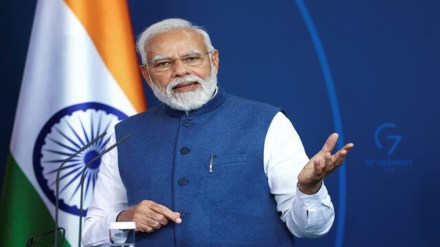Ahead of the Budget for 2025-26, Prime Minister Narendra Modi will interact with a group of economists to seek their suggestions on maintaining economic growth momentum amid global uncertainties, a key focus area of the government.
Modi in his remarks will likely talk about some key priority areas for his government to boost economic activity and transition India to a developed nation by 2047. Nineteen economists and thinkers are expected to attend the meeting with Modi at Niti Aayog.
The government was of the view that the spike in global supply chain disruptions because of the war in the Middle East and the ongoing conflict in Ukraine, are going to be enduring challenges.
There have been some concerns after the GDP rose by 5.4% in July-September year-on-year, the lowest in seven quarters. Some analysts feared that FY25 growth may come in below 6.5%. The H1FY25 growth has come in at 6%. The government has termed the Q2FY25 number as a blip and the economic growth to improve in the coming quarters.
The discussion in the meeting with Modi will likely touch upon critical drivers that will sustain growth towards Viksit Bharat 2047 including generating productive employment, addressing the skill gap challenge, tapping into the full potential of the agriculture sector, and enhancing India’s manufacturing and MSME growth through deregulation. Other priority areas may include managing India’s energy security and transition, balancing rural-urban development, continuing support to high-quality capital expenditure, and innovations and R&D.
Post-COVID, the Centre’s capex has grown on an average of 30% between FY22 and FY24 as the government adopted a capex-led growth strategy, taking such productive spending to a desirable 3% of GDP for the first time in FY24. It had set a target of Rs 11.11 lakh crore for FY25, a 17% increase over Rs 9.5 lakh crore achieved in FY24.
Analysts have said that providing credit to informal micro enterprises and fillip to exports from rural areas will create sustainable rural demand.
The Budget for 2025-26 is expected to have new measures for the manufacturing sector, MSMEs and employment creation.
